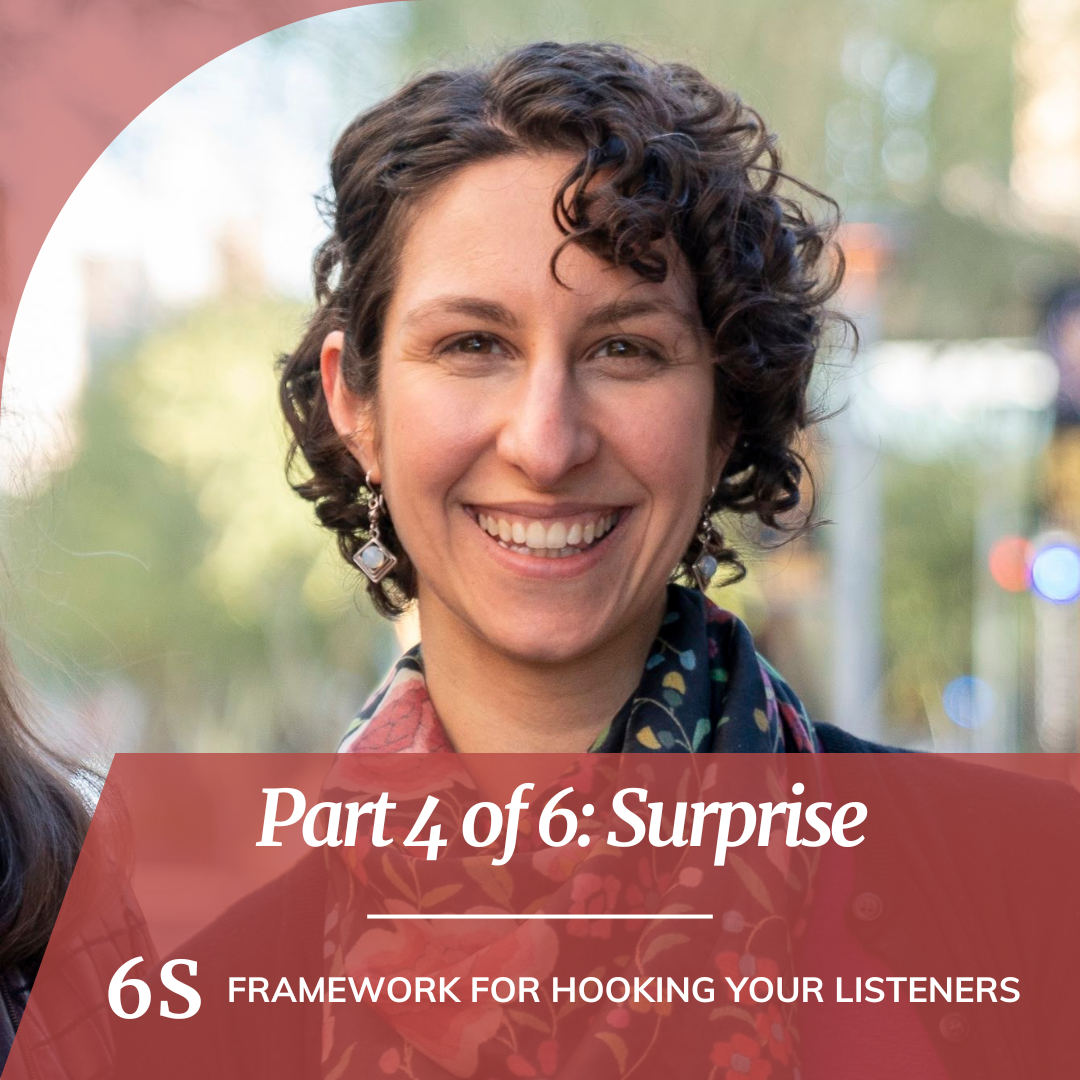How to Hook Your Listeners and Keep Them Coming Back (6S Framework Overview)
The New 6 S Audience Engagement Framework
Drawing on insights from the Sound Judgment body of work, we came up with a set of practices that work separately and together to ratchet up the wow factor of your podcast or radio show. The 6 S Audience Engagement Framework will also help you or your on-air talent do what we always talk about here at Sound Judgment: become a beloved host.
Here are some brief explanations and links to the full article about each element:
1. Sound Vision: As you’ll see in the essay linked below, this term came to me by way of Creative Media principal and former PRX chief content officer John Barth. Fundamentally, it’s how you use sound of all kinds to bring your conversation or narrative alive and make it attractive to your specific listener. Sound design plays an important role, but a sound vision is bigger than pure sound design. It includes your intentions about who you want to attract as your ideal listener and how you want them to feel; the tone and approach of your language; sound gathered outside the studio; and the strategy behind all of your other sound, including theme music and scoring. (I encourage you to think about why you're using audio to deliver your story in the first place, rather than some other medium. Sound vision is the way you deliberately employ the power of audio.)
READ MORE: The Importance Of Sound Vision For Audience Engagement
2. Structure: At its most basic, structure is the segmentation of your episode. It provides a container for how you build it. It could be as simple as an hour-long, straight interview, like Fresh Air (which is more highly structured than it appears), or as rule-based as the 12-question podcast Famous & Gravy. Or it could be as complex as a serialized narrative podcast or a magazine-format show, like All Things Considered. (At NPR, structure is organized by "the clock," which splits up the hour or half-hour program into specific, down-to-the-minute segments.)
READ MORE: How Story Structure Helps You Become More Creative
3. Scenes: “What do you mean, your engagement backbone?” an NFCB workshop participant asked about this slide. Scenes are obviously the core ingredients of any narrative podcast. But good interview shows also include scenes: they’re the stories guests and hosts tell, if you use your interviewing skills to elicit them. Scenes help listeners take a sensory journey — and once humans are on a journey, we are typically compelled to stick around to learn what happens.
READ MORE: Scenes: The Backbone of Engagement
4. Surprise: When you’re building scenes, specifics, and suspense, it should become second nature to look for surprises, or what an old producer of mine called “left turns,” in your story. As a journalism professor mentioned many, many years ago — "dog bites man" is not a story. "Man bites dog" is. Obvious? Kinda. It’s all in the observation and the setup.
READ MORE: Why it’s good to be twisty
5. Suspense: This is a big idea that you may think doesn’t apply to you, unless you’re a true crime podcaster. In fact, it’s simply one way to describe what is sometimes called an “open loop:” we pose a question and promise to answer it. But we don’t answer it right away. Then we do it over and over again, hopefully amping up the stakes each time. We need to create mysteries, even small ones, for the listener.
READ MORE: Intrigue creates forward momentum
6. Specifics: If you’re a Sound Judgment listener, you’ve heard me talk with several guests about the power of highly specific language — of showing, not telling. Specific language has the condensed energy of light gleaming from the center of a diamond, compared to generalities — the Walmart cubic zirconiums of the scriptwriting world.
READ MORE: How to transport your listeners to another place and time
While you can, and should, practice all six, thinking about them simultaneously can feel overwhelming. At first, build your skills by executing one or two at a time. Story editors: try using this framework as a test of scripts and mixed episodes. When an episode is "fine," but somehow flat, it's possible that one or more of the 6 Ses is missing.







